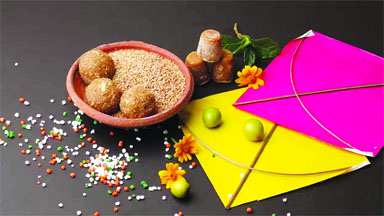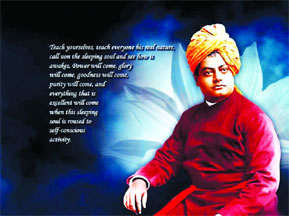
Makar Sankranti, one of the most celebrated festivals in India, marks the transition of the Sun into the zodiac sign of Capricorn (“Makara” in Sanskrit). This celestial event signifies the end of the winter solstice and the beginning of longer days. Observed annually on January 14th or 15th, depending on the solar calendar, Makar Sankranti is deeply rooted in agricultural traditions, astronomical significance, and cultural diversity. Across the country, this festival is celebrated with varied customs, rituals, and regional names, reflecting the rich tapestry of India’s heritage.
The Astronomical and Agricultural Significance of Makar Sankranti
Makar Sankranti is an astronomically significant day as it marks the Sun’s northward journey, known as “Uttarayana.” This transition heralds the end of the darkest nights and the arrival of longer days, symbolizing enlightenment, prosperity, and new beginnings. Uttarayana is considered highly auspicious in Hinduism, and many believe it to be a time when divine interventions are more accessible.
Agriculturally, Makar Sankranti is a harvest festival. It is a time to thank nature and the Sun for a bountiful harvest and pray for future prosperity. This festival is particularly important in agrarian societies where the rabi crop (winter crop) is ready for harvesting. Farmers celebrate the fruits of their labor with joy and gratitude, making it a period of communal festivity.
Regional Variations in Celebration
Makar Sankranti is celebrated under various names and with unique customs across India. Despite the differences, the underlying themes of gratitude, renewal, and community bonding remain consistent.
Pongal in Tamil Nadu
In Tamil Nadu, Makar Sankranti coincides with the four-day harvest festival of Pongal. Each day has a unique significance:
– Bhogi: The first day is dedicated to cleaning and discarding old belongings, symbolizing a fresh start.
– Thai Pongal: The second day, Thai Pongal, involves boiling freshly harvested rice with milk and jaggery in clay pots. This dish, also called Pongal, is offered to the Sun God as a gesture of gratitude.
– Mattu Pongal: On the third day, cows and bulls, which play a vital role in agriculture, are honored and decorated.
– Kaanum Pongal: The final day is dedicated to family reunions and social gatherings.
Lohri in Punjab
In Punjab, Makar Sankranti is celebrated as Lohri, a festival primarily associated with the harvesting of sugarcane. The evening before Makar Sankranti, people light bonfires, sing traditional songs, and dance to the beats of dhol. The bonfire symbolizes the burning of negativity, and offerings of sesame seeds, jaggery, and popcorn are made to the fire as a gesture of gratitude.
Uttarayan in Gujarat
Gujarat celebrates Makar Sankranti as Uttarayan, a festival known for its vibrant kite-flying tradition. The skies are filled with colorful kites, symbolizing freedom and joy. The International Kite Festival, held in Ahmedabad, attracts participants from around the globe. Special dishes like “undhiyu” (a mixed vegetable dish) and “jalebi” are prepared to mark the occasion.
Sankranti in Karnataka and Andhra Pradesh
In Karnataka and Andhra Pradesh, Makar Sankranti is a three-day festival:
– Bhogi: Similar to Tamil Nadu, Bhogi marks the cleaning of homes and the burning of unwanted items.
– Sankranti: The main day involves offering prayers, preparing special dishes like “ellu-bella” (a mixture of sesame seeds, jaggery, coconut, and peanuts), and exchanging these with friends and family.
– Kanuma: On the third day, cattle are honored, and agricultural tools are worshipped.
Magh Bihu in Assam
In Assam, Makar Sankranti is celebrated as Magh Bihu or Bhogali Bihu. It is a harvest festival marked by feasting, bonfires, and traditional games. People build temporary huts called “meji” and “bhelaghar” using bamboo and straw, where community feasts are held. The meji is later burned as a ritual to mark the end of the celebrations.
Poush Sankranti in Bengal
In West Bengal, Makar Sankranti is known as Poush Sankranti. Devotees take holy dips in the Ganges and other rivers to purify their souls. The famous Ganga Sagar Mela, held at the confluence of the Ganges and the Bay of Bengal, attracts millions of pilgrims. Traditional sweets made from date palm jaggery and coconut, such as “pithe” and “patishapta,” are integral to the celebrations.
Other Regional Variations
– Maharashtra: People exchange sweets made of sesame seeds and jaggery, saying, “Tilgul ghya, god god bola” (Take sesame and jaggery, and speak sweetly).
– Odisha: Makar Sankranti is observed with offerings of rice, jaggery, and sugarcane to deities, and kite flying is a popular activity.
– Bihar and Jharkhand: People prepare “dahi-chura” (flattened rice with yogurt) and “tilkut” (sesame sweet) to celebrate.
– Himachal Pradesh: Known as Magha Saaji, this day is marked by community feasts and traditional dances.
Rituals and Symbolism
The rituals of Makar Sankranti are steeped in symbolism, reflecting the spiritual and cultural ethos of Indian society.
Holy Baths and Pilgrimages
Taking a holy dip in rivers like the Ganges, Yamuna, Godavari, or Krishna is believed to cleanse sins and purify the soul. Pilgrimages to sacred sites such as Ganga Sagar and Prayagraj hold special significance.
Worship and Offerings
Devotees offer prayers to the Sun God (Surya) and express gratitude for life-sustaining energy. Special offerings include sesame seeds, jaggery, sugarcane, and rice.
Charity (Daan)
Charitable acts are considered highly meritorious during Makar Sankranti. People donate food, clothes, and money to the needy, embodying the spirit of sharing and compassion.
Kite Flying
Kite flying, a prominent activity during Makar Sankranti, is a metaphor for soaring aspirations and freedom. It’s also a way to enjoy the outdoors and bask in the Sun’s energy.
Bonfires
Lighting bonfires is a tradition observed in northern India. It symbolizes the destruction of evil and the warmth of community bonding.
Culinary Delights
Food plays a central role in Makar Sankranti celebrations. Traditional dishes vary by region but often feature sesame seeds, jaggery, and rice. These ingredients are not only nutritious but also hold symbolic significance:
– Sesame Seeds (Til): Represent warmth and togetherness.
– Jaggery (Gur): Symbolizes sweetness and prosperity.
– Rice: Represents fertility and abundance.
Popular dishes
– Tilgul Ladoo (Maharashtra): Sweet balls made from sesame seeds and jaggery.
– Pongal (Tamil Nadu): A sweet or savory rice dish.
– Pithe (Bengal): Rice flour pancakes stuffed with coconut and jaggery.
– Undhiyu (Gujarat): A mixed vegetable dish cooked with spices.
The Global Appeal of Makar Sankranti
While deeply rooted in Indian traditions, Makar Sankranti’s themes of gratitude, renewal, and community resonate universally. The festival is celebrated by Indian diaspora communities worldwide, bringing together people of diverse backgrounds to share in the joy of the harvest.Makar Sankranti is more than just a festival; it is a celebration of life, nature, and the cosmic order. It bridges the gap between the physical and spiritual, the individual and the community, and the past and the future. As the Sun begins its northward journey, Makar Sankranti serves as a reminder to embrace change, express gratitude, and spread joy. In its myriad forms, this festival captures the essence of India’s unity in diversity, offering a timeless message of hope and renewal.





Be the first to comment